The Motorola Atrix 4G Preview
by Anand Lal Shimpi on February 13, 2011 3:18 AM ESTA couple of months ago I had the opportunity to join a bunch of NVIDIA employees for dinner. Among those at the table were Michael Toksvig and Tony Tamasi. Michael, or Tox as he likes to be called, worked on the AA hardware for NV17, NV25, NV40 and G80. He managed to skip NV30. More recently Tox was the chief architect on GeForce ULV, the GPU integrated in NVIDIA's Tegra 2 SoC.
Tony Tamasi is someone I've known for around a decade. I first met him while he was working at 3dfx, and got the pleasure of working closely with him when he later moved to NVIDIA to do technical marketing. Both Tox and Tony are very passionate engineers at heart and are up for a good conversation.
The conversation we had at dinner that night was on the future of the smartphone and the mainstream PC. Tony argued that technically, within 3 years, a high end smartphone will be able to offer the performance of a (low end) mainstream PC today. Admittedly that isn't the highest bar possible as virtually everything above a netbook falls into that category, but it's a valid claim.
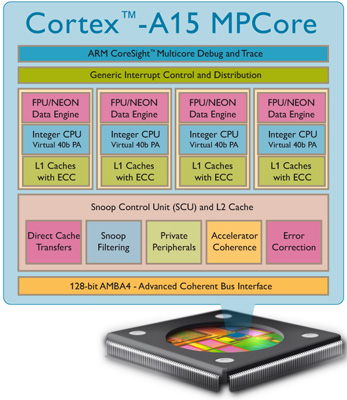
ARM's recently announced Cortex A15 should be able to outperform Intel's current generation Atom depending on clock speed/core count configurations. Add another generation beyond that and you might have the performance of a mainstream PC today, at least the lower end of the mainstream segment.
Tony further admitted that although it would be technically feasible for mainstream PC users to replace their PCs with smartphones in three years, there are a number of other things that will likely prevent such a thing from happening too quickly. But he was confident that within the next 10 years, mainstream PCs will be nothing more than smartphones tethered wirelessly to a monitor, keyboard and mouse. When you're done at your desk you'll just pick up your smartphone and carry it with you.
Note that this future only pertains to mainstream PCs (e.g. sub-$500 market). There's still an obvious benefit to having a larger chassis that can accommodate higher transistor counts and higher TDPs.
I've heard other PC companies offer similar visions of the future, although they all disagree on the timeframe. I've heard periods as short as 5 years and as long as 20 years. Predictions have a nasty habit of not taking the unpredictable future into consideration, but this is definitely a valid possibility for the next decade or so.
It wasn't a coincidence that we had this conversation at dinner some months ago. Tony knew what was being announced at CES.
Jen-Hsun Takes the Stage
Jen-Hsun's CES keynote was probably the best I'd seen him do in recent history. The last time I heard Jen-Hsun speak was at the first and only NVISION conference. His keynote at the time was about the importance of GPUs and the role they'll play in future computing devices. The keynote was bland. It ignored the obvious need for a a balance of good CPU *and* GPU technology. It was everything we've grown to despise about NVIDIA - Jen Hsun spoke about a world where GPUs and NVIDIA were driving the entire computing industry forward. He spoke about a world that didn't exist.
Jen-Hsun at CES 2011 was more like the old Jen-Hsun. There was more passion, more belief, less BS. But he was also a more mature Jen-Hsun. He still took his jabs at x86 and the Wintel alliance, but he offered better perspective - not just an injection of whatever NVIDIA cooked up in the basement the other night.
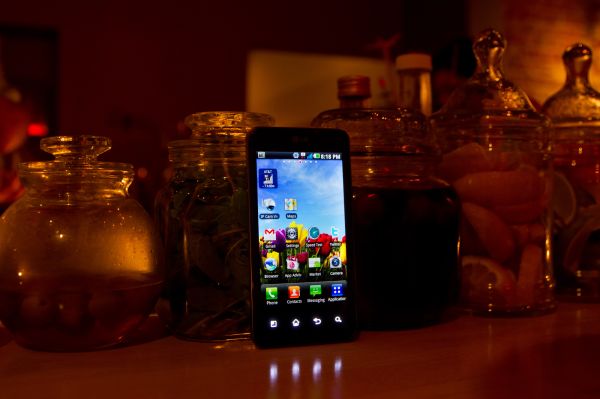
LG's Optimus 2X - The first Tegra 2 smartphone
At CES 2011 NVIDIA finally announced the first smartphone based on its Tegra 2 SoC: LG's Optimus 2X. Motorola followed up with three more Tegra 2 based devices. And although Google didn't make a big deal out of it at the show, NVIDIA also has the honor of being the official SoC partner on the Honeycomb release of Android. The first OEMs to launch Honeycomb tablets will be running NVIDIA Tegra 2 SoCs.
NVIDIA also announced its intentions to plug the gaping hole in its future. The company is an ARM architecture licensee, and Project Denver will be its first high performance CPU design.
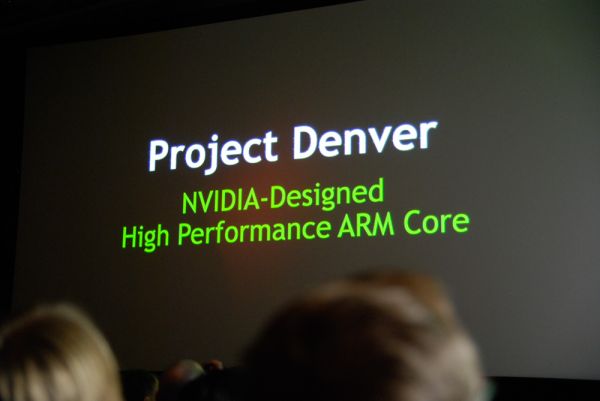
If high end smartphones will begin to replace mainstream PCs, NVIDIA needs to offer a compelling CPU, GPU and overall SoC for that market. Jen-Hsun always understood the importance of the OEMs in gaining traction in the PC market, and OEMs tend to want to have the best hardware possible. In order to give them that, NVIDIA can't simply ship an off-the-shelf ARM core, it needs something better than that.
So what's the point of all of this?
If smartphones are moving up in the world and will eventually be powerful enough to drive a high resolution display and run mainstream computing tasks, the evolution has to start now. There are usually a bunch of failed attempts and baby steps before we finally arrive at the product that just clicks. Look no further than the smartphone market for proof of that. It took years of PDAs and crap phones before we got to things like the Droid, the iPhone and the Palm Pre.
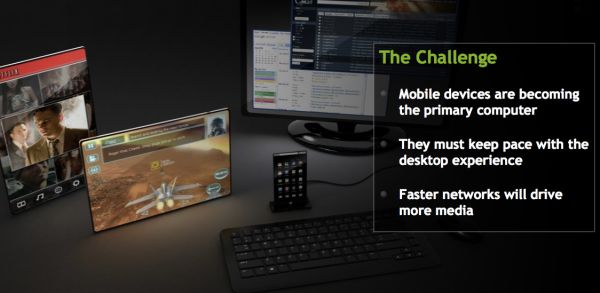
The battle for the advancement of smartphones has begun, and Motorola just fired the first shot.
LG announced and began shipping the world's first Tegra 2 based smartphone, however it looks and behaves much like any other Android phone - just faster.
Motorola's flagship Tegra 2 device is a little different. At CES Motorola announced the Atrix 4G as a dual-core superphone with 1GB of RAM and a 1930mah battery. I was worried that this meant the Tegra 2 couldn't be trusted on a battery, but LG proved me wrong. The point of the extra large battery and the ridiculous memory capacity is because Motorola wants the Atrix 4G to be more than just a smartphone. It wants it to compete with a netbook.
Don't get me wrong. What Motorola wants and the reality that exists don't exactly line up. A netbook will still give you a better computing experience, particularly something based on AMD's latest Brazos platform. But as I mentioned earlier, a revolution has to start somewhere.
A couple of days ago I got a package from Motorola. In it was the Atrix 4G, a multimedia dock, bluetooth keyboard and mouse. I'm currently on a flight to Barcelona to join Brian Klug as we cover Mobile World Congress for the first time on AnandTech. MWC is a very large mobility focused tradeshow that's held yearly. From a content standpoint it's like a smartphone/tablet CES.
It takes days for us to run through all of our battery life tests, and usually a couple of weeks of constant usage for us to put together one of our smartphone reviews. With Brian working on the Verizon iPhone 4 and both of us en route to MWC, it'll be a little while before we can bring you a full, in-depth Atrix 4G review.
That being said I wanted to get some of my thoughts out there as this is a highly anticipated device that attempts to do a lot.
What follows is by no means a full review, I wouldn't dream of calling it that. But rather an account of my experiences with Motorola's Atrix 4G thus far. Give me some time after MWC and we'll get a full review up. The Atrix hasn't left my side since it arrived and I'll be using it to keep up with emails and schedule meetings at the show as well. Be sure to read our Optimus 2X Review for more coverage on what makes up NVIDIA's Tegra 2 SoC.


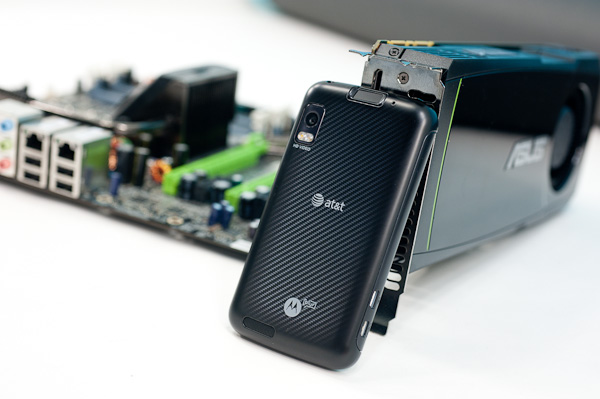
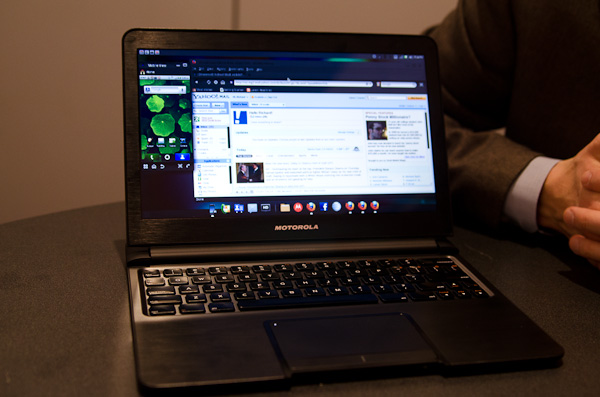
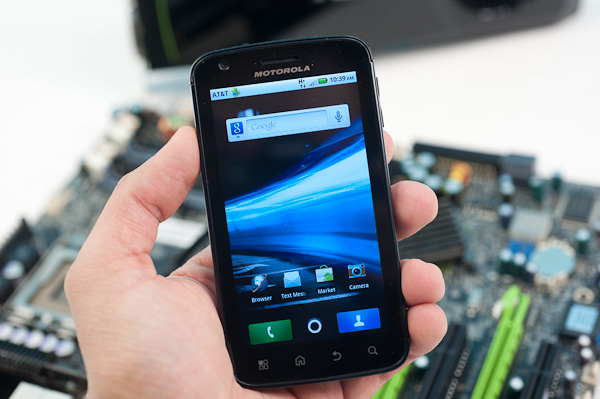








41 Comments
View All Comments
Shadowmaster625 - Monday, February 14, 2011 - link
I was confused when I saw that price. Why would anyone pay that? Then it got me wondering... are we not able to simply plug the phone into our own monitor using the appropriate hdmi cable? And then plug in a usb keyboard and mouse? Who needs a even a $190 dock? This article didnt really explain why. I've got 3 usb keyboards and just as many mice laying around. The last thing I want to do is buy another to satisfy their need for revenue.bill4 - Sunday, February 13, 2011 - link
The whole controversy over pentile matrix just scream of something Apple fanboys kicked up to attack the competition. Here's guessing both of the editors you mentioned carry an iPhone everyday. Was I right? Gee, what a shock. They probably also love the "retina display" even though that was the biggest bunch of marketing hooey ever. For multiple reasons, not least of which scientifically the resolution has to be a good deal higher than 960X640 for the human eye to not be able to make out pixels at the distance the iPhone is actually used.The Apple bias is the media is just insane. Almost every single tech editor in the world just happens to have an iPhone as his personal phone, even though it's the worst phone on the market.
Anyways my point is, NOBODY in the real world cares about this. I have a Captivate, and I NEVER would have suspected any problem with the display if I hadn't read about it, in fact I still didn't know what the problem supposedly was after reading about it!
I'm afraid I dont know if I can go back from Super Amoled, the off angle viewing is just so good, when I look at my friends Droid X or iPhone, they just look so washed out and terrible. Even though I'm not exactly thrilled with some aspects of Samsung, and was considering picking up an Atrix or Inspire, the sad fact is I seriously am beginning to wonder if I'll ever be able to go back to a regular LCD on a phone now, they just look so bad.
bill4 - Sunday, February 13, 2011 - link
ok, maybe not the biggest bunch of marketing hooey ever, but you get the idea.RaLX - Sunday, February 13, 2011 - link
Well I would say you're the one behaving as a fanboy...Fer me the iPhone display (even if the name is marketing) has a superior definition for text and images and thanks to it being IPS technology the colors are more natural and viewing angles are very good for a LCD (even though poorer than AMOLED of course).
I hated Nexus One fuzzy text and everybody it's entitle to their opinions without having to be called names. I can tell you that there are persons like me that doesn't stand the grilled texture vision of this kind of LCD and even though I could live with that I will avoid it whenever I can.
jaredtrobinson - Sunday, February 13, 2011 - link
lol I agree w/ you.. so much rage from that guy :)Anand stated clearly it was a matter of preference. I have an OG Droid and friend has a Dinc, girlfriend has a DroidX. I am not a fan on the Dinc when reading text. The TFTs to me just seem much more crisp
JCheng - Sunday, February 13, 2011 - link
I personally care about this a lot. I went to the AT&T store to buy a Captivate and was very distracted by the display's flyscreen effect--that was before I ever heard of pentile (which I learned about after getting home and googling what was wrong with these screens).To me the effect is NOT subtle and is very annoying, it's a dealbreaker for me. I thought my next phone was going to be the Atrix but looks like it will be Inspire or Galaxy S II instead.
TareX - Tuesday, February 15, 2011 - link
Ditto. I was almost sure the Atrix was gonna be my next phone. I mean, LCD PenTile???? Bad call.I love SAMOLED PLUS, but I hate Samsung's TouchWiz.
TheMan876 - Sunday, February 13, 2011 - link
I'm currently an OG Droid user and I was thinking of getting a Droid BIONIC (almost the same as an Atrix) when it comes out. But this Pentile screen may make me reconsider.I was really happy to read that there would be a higher res screen on these phones, but I hate that Pentile matrix whenever I see it on my friend's Galaxy S phone. Bugs the crap out of me and I'm by no means an Apple fanboy.
bill4 - Sunday, February 13, 2011 - link
/AntoineDodsonvoiceHow can tech editors actually cover this product and not instantly realize how stupid it is?
Hmm, well I can hook it to my phone and it's like a real netbook!
Hey guess what, Wal Mart sells 10.1", Win 7 starter, 160 GB HDD, netbooks for 249 all day every day.
This laptop dock thingy, that isn't 1/4 as good or powerful as a real netbook,adds $300 to the price...plus I'm not sure but I thought I read somewhere the dock thing is $130 on top of that...but even if it's "only" 300, it makes no sense AT ALL. It's not even more portable.
The only way this possibly makes sense, is if by using the phone hardware, you save money on the laptop dock thing, aka it was available for say, 99 dollars. Even then it's pretty dicey, as almost everybody probably already has a laptop, and a good portion already own a netbook as well.
Plus, though it's technically illegal it works fine, with a tether program like PDA net, you can tether (even on an unrooted phone) without paying the extra 20, which you cant do with this dock AFAIK (since, it doesnt run windows to run the PDA client).
strikeback03 - Monday, February 14, 2011 - link
Because the idea isn't really really dumb, the price is. Would you rather they ignore it until the inevitable price cuts are announced?